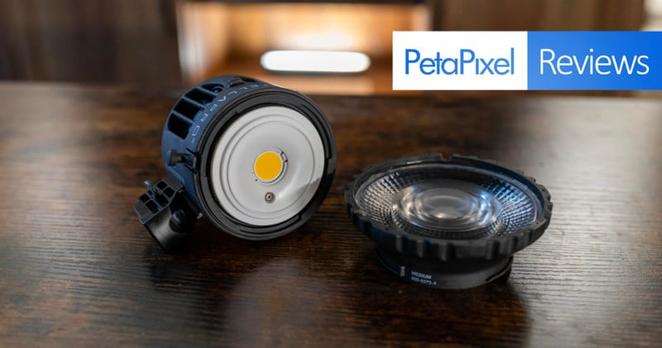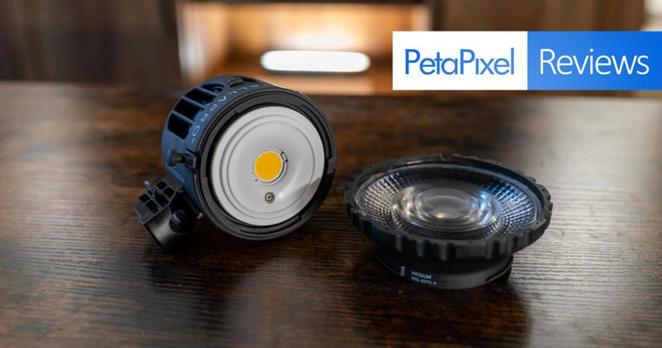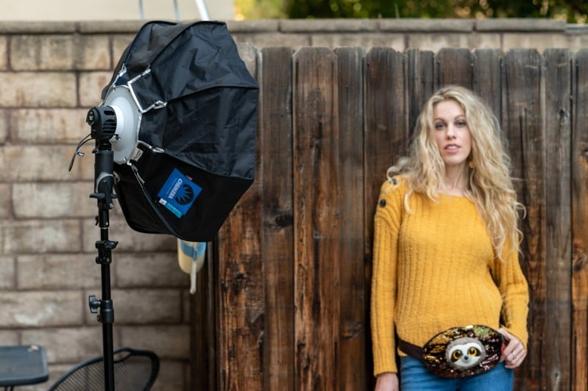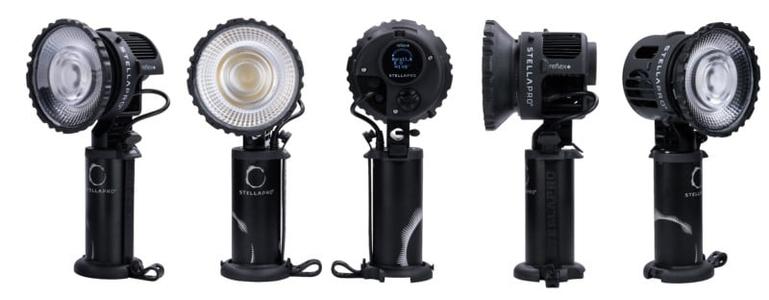Stella Pro Reflex vs Profoto A1X: They Aren’t Interchangeable
Light and Motion made some lofty promises when it announced the Reflex LED lighting system. Designed to be both a still and video light, it can certainly do both, but we wanted to see if it truly could replace standalone classic strobe systems like the Profoto A1X.
As noted in the initial news coverage of the hybrid light, the Reflex retails for $849 and the Profoto A1X (when not on sale) retails for $895, making them pretty much identical as far as a wallet is concerned. Where things start to differ is with what they can do.
Editor’s note: The following evaluation is meant to be viewed after reading the full review of the Stella Pro Reflex, as most of the information below focuses on showing how the LED performs in comparison to those results and is written from the assumption that readers have familiarized themselves with the same assessment of the LED Light.
What's the Difference?
Comparing the Reflex light to any existing Speedlight or strobe is kind of like comparing apples to oranges. While both systems provide light for photos, they are incredibly different in design, form factor, and "flavor." The Profoto A1X is designed to be used as an off or on-camera flash system with the ability to be used in both a hot shoe of a camera, commanding other Profoto lights, or remotely triggered via the Air-TTL system.
The Reflex system is both a constant light for video as well as a strobe for stills combined into one body and designed to be mounted in a variety of ways. It also works well with a plethora of strobe-like modifiers using the mini-Elinchrom mount, and that includes the softbox in the image above. The thing that makes the Reflex light stand out from other LED hybrids is it is much more powerful a strobe than other systems of its like on the market, and the fact it can shoot up to 20 frames per second in a burst with absolutely zero downtime to refresh. This performance includes shooting in high-speed sync mode and in extensive testing it has never once had any issue with overheating. Effectively, you will most likely run into a buffering situation with your camera before you run into any sort of issue with the Reflex.
As impressive as the Profoto A1X is, even it has to deal with recycling times on its battery, and that translates to a situation where it will sometimes miss a frame when it is trying to light a burst of shots.
Another added perk or difference with the Stella Pro Reflex light, when compared to the Profoto A1X, is that the Reflex can be triggered by most existing strobe triggers including Elinchrom and Godox/Flashpoint. The company says soon Profoto Air TTL triggers will also be able to connect and command them as well. While this is a small detail, it at least helps to save most end users a little money by helping them avoid having to purchase additional triggers for a new light, as well as making it easier for them to simply add the reflex lights to their already existing light kits.
Portrait taken with the Stella Reflex Pro.
While the Reflex is not meant to be connected directly to a camera's hot shoe mount, it is rather versatile in its design. The battery can be disconnected from the main light making it easy to swap and charge, and with the variety of connection points, it is possible to mount the light in multiple ways to light stands.
Performance and Power: Strobe
It is in a comparison of strobe power that things get interesting. While the Reflex system is quite useful for a hybrid shooter, it just does not have the power to compete with a Profoto A1X (or even a standard Godox speedlight) in terms of raw "pop" power. The Reflex uses a strobing LED while traditional speedlights still use a flash tube or bulb. During the course of my testing with the Reflex at max power, shooting a portrait at ISO 100, f/4 to 5.6, and a shutter speed of 1/160 (standard flash sync speed), I could get a pretty decent image out of it. However, keeping the same camera settings and using the Profoto A1X at full power returned results that could probably be seen coming from a mile away.
As you can see, the A1X is overwhelmingly brighter than the Reflex when it comes to its strobe power. But more than that, the light spread is significantly different between the two lights. With the Reflex system, regardless of the power level, the spread of light is very tight and contained, making it easy to control and adapt with modifiers.
The Profoto A1X has a much wider spread and it is also worth noting that the A1X has a slightly different tone (straight out of camera) when compared to the Reflex system. To get the A1X to provide the same spread as the Reflex would require adding a grid or two.
Below are a few samples to illustrate the differences between the two lights.
Reflex Lighting
A1X Lighting
Performance and Power: Constant Lighting
The Profoto A1X does have a modeling light like every other professional strobe under the Profoto umbrella, but while it is enough light to help focus a camera, it is not enough to be functionally useful for anything else. This is where the Reflex stands apart from conventional speedlights, as the power available as a video light is fantastic and makes it an ideal solution for video shooters who need to take stills from time to time. As I have said in discussion with some industry colleagues about this light, arguably the Profoto A1X is worse at being a video light than the Reflex is at being a strobe.
A Final Observation
Something that stood out to me when comparing these light systems is how most new off-camera flash systems can now be controlled via their respective remote triggers. Adjusting the zoom, power output, and sync modes can be done remotely in many cases. The Stella Pro Reflex system will likely get there eventually through the use of the mobile app, but in its current state, making changes to the light channel, power, sync modes, and continuous or strobe modes all have to be done manually on the back of the light. It might be a minor detail, but it can be a frustrating one given how small the screen and menu are on the back of the Reflex light, especially if it is positioned in an awkward or on a high reaching light stand.
Conversely, as a hybrid shooter flipping between constant light for video and still shots with the strobe, the system does remember whatever power setting you left it on between mode switching so it is possible to swap back and forth quickly without having to reset it every time.
Different Tools for Different Tasks
Given how reliable the Reflex light is for shooting action (granted your ISO will have to be bumped up a notch to ensure everything is exposed correctly) and high-speed shooting, it truly is a groundbreaking light system that can be a very useful addition to a hybrid shooters kit. The Stella Reflex Light can eliminate recycle times and overheating from a photographer's list of worries and is a great step at changing a creative's view of what a light can or should be able to do.
However, for still photographers, it will take several Reflex LED lights to provide the same power output as a single Profoto A1X. If the goal is to create bright, clean, and sharp images at a low ISO, then in that scenario the Profoto A1X wins hands down.
But if the plan is to capture and freeze high-speed action in multiple bursts as well as use it to creatively light multiple video scenes, the Reflex system is worth your consideration, especially since the company says many functional updates are a simple firmware update away. I just wish that the burst power was close to what is achievable from a flash tube. Once that happens, you can count on me swapping out all of my lights. It's just not clear how far away that magnificent future is.
A lot of people are going to stand on either side of the aisle and claim one choice is definitively better than the other, but the truth is somewhere in the middle.
#comparisons #equipment #reviews #a1x #burst #comparison #constantlight #led #profoto #profotoa1x #reflex #speedlight #stellapro #strobe #versus #videolight #vs



